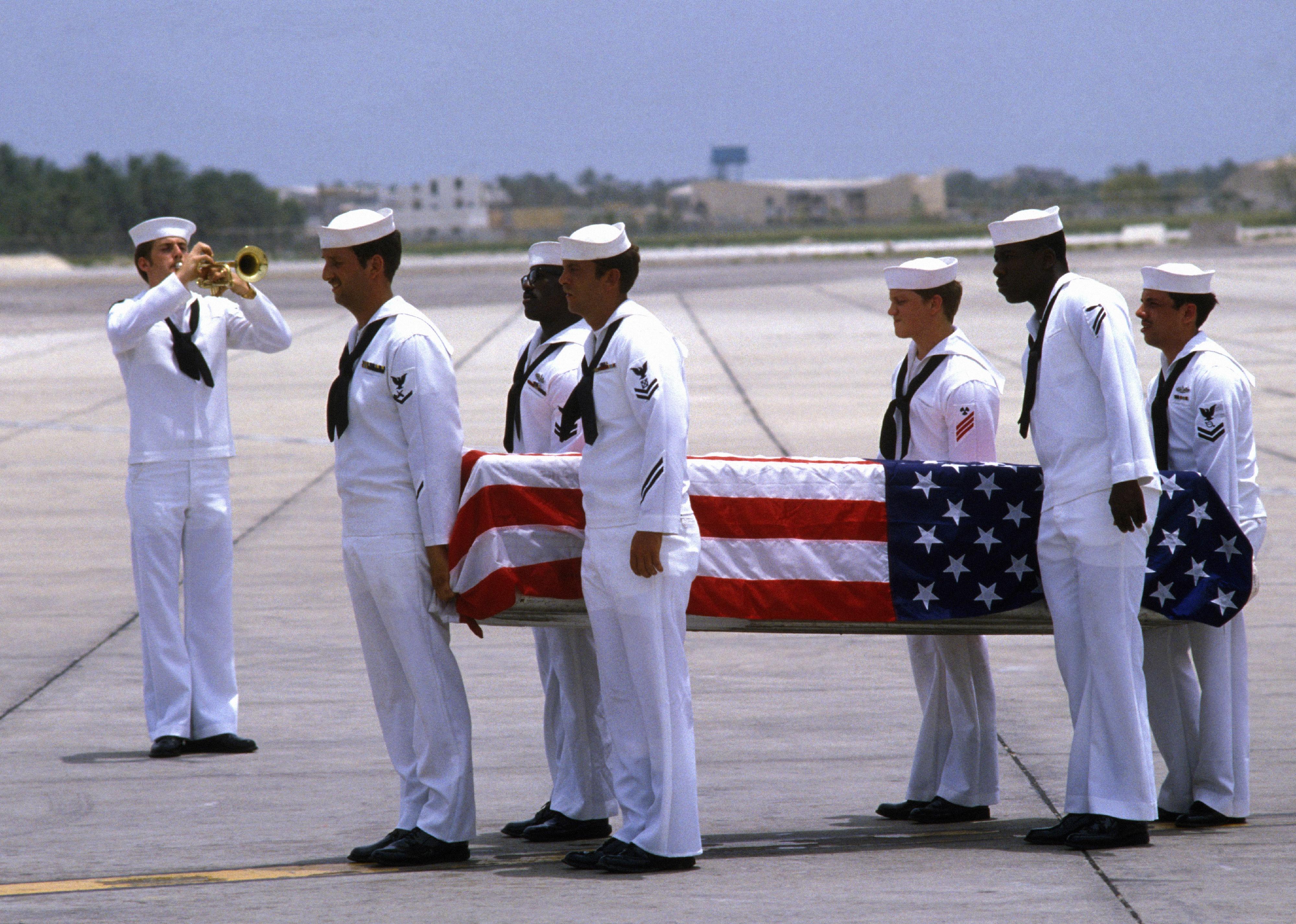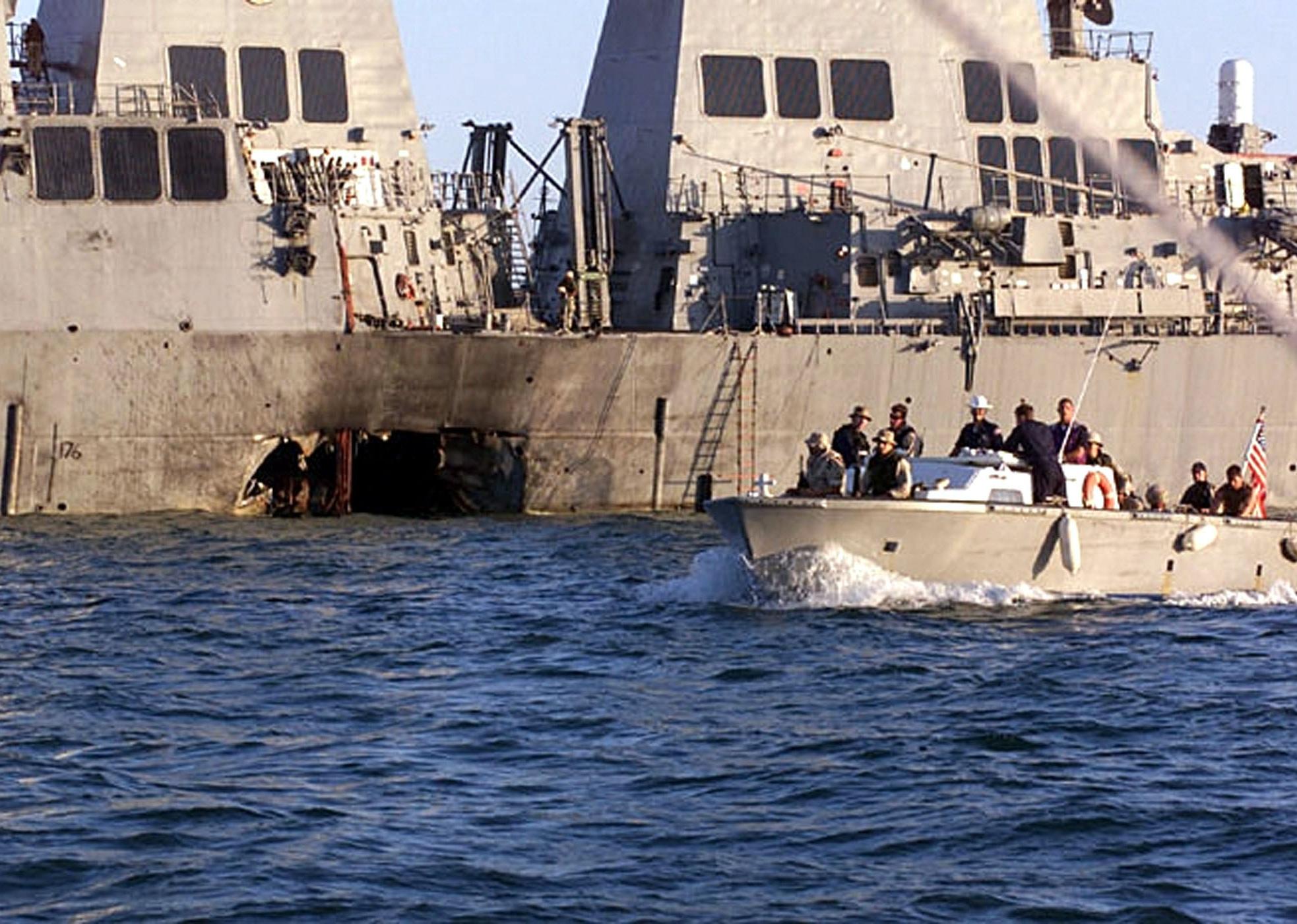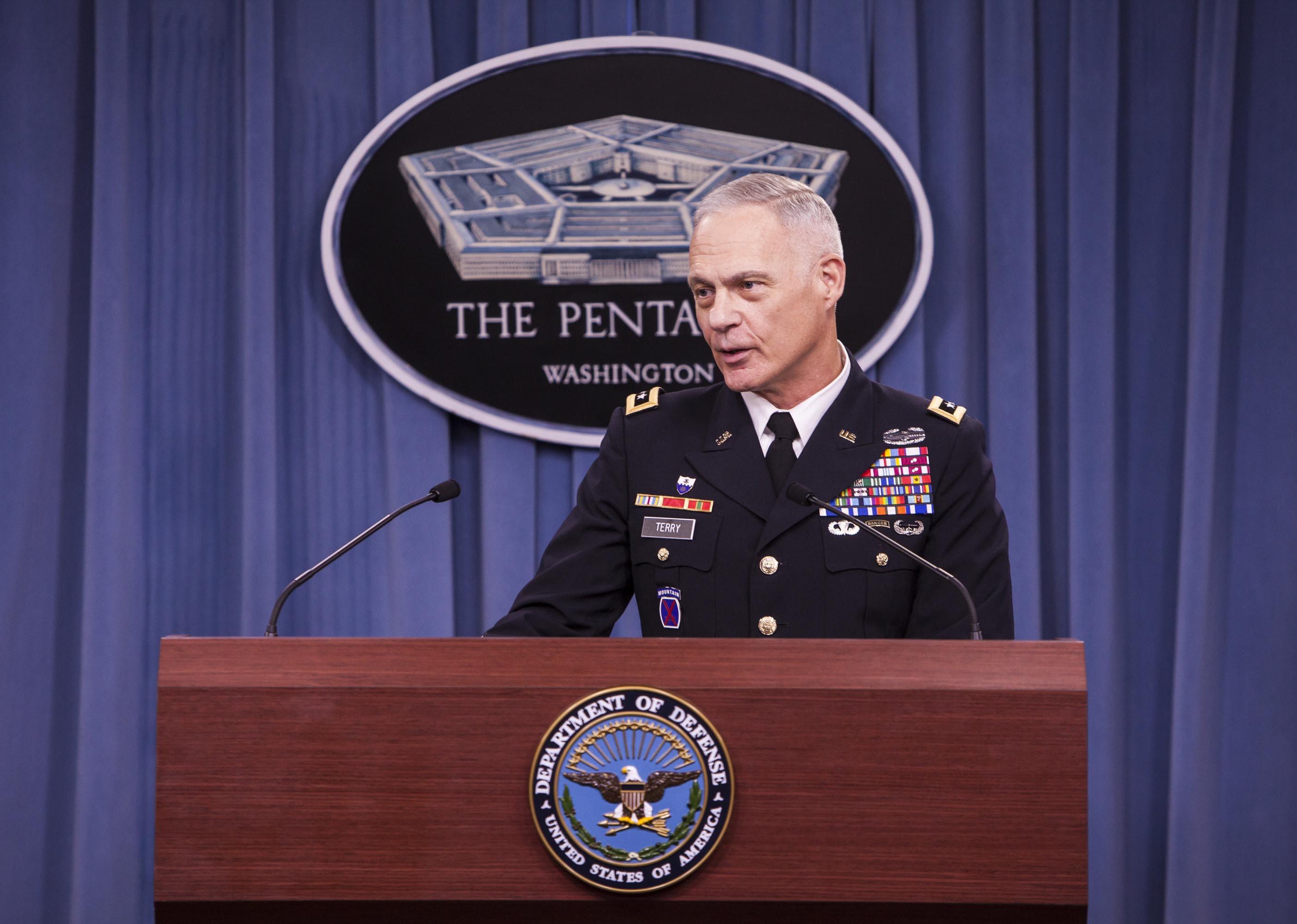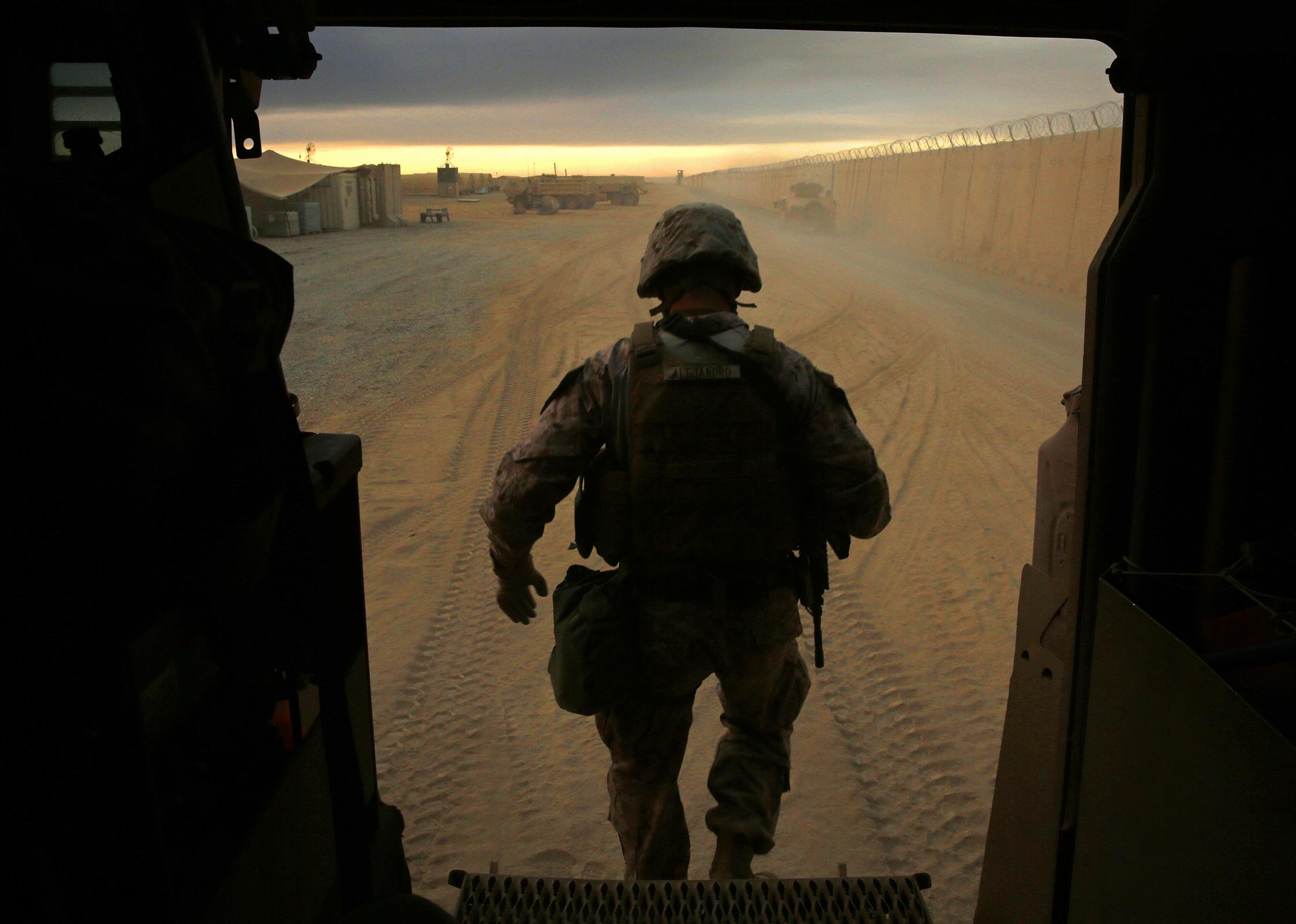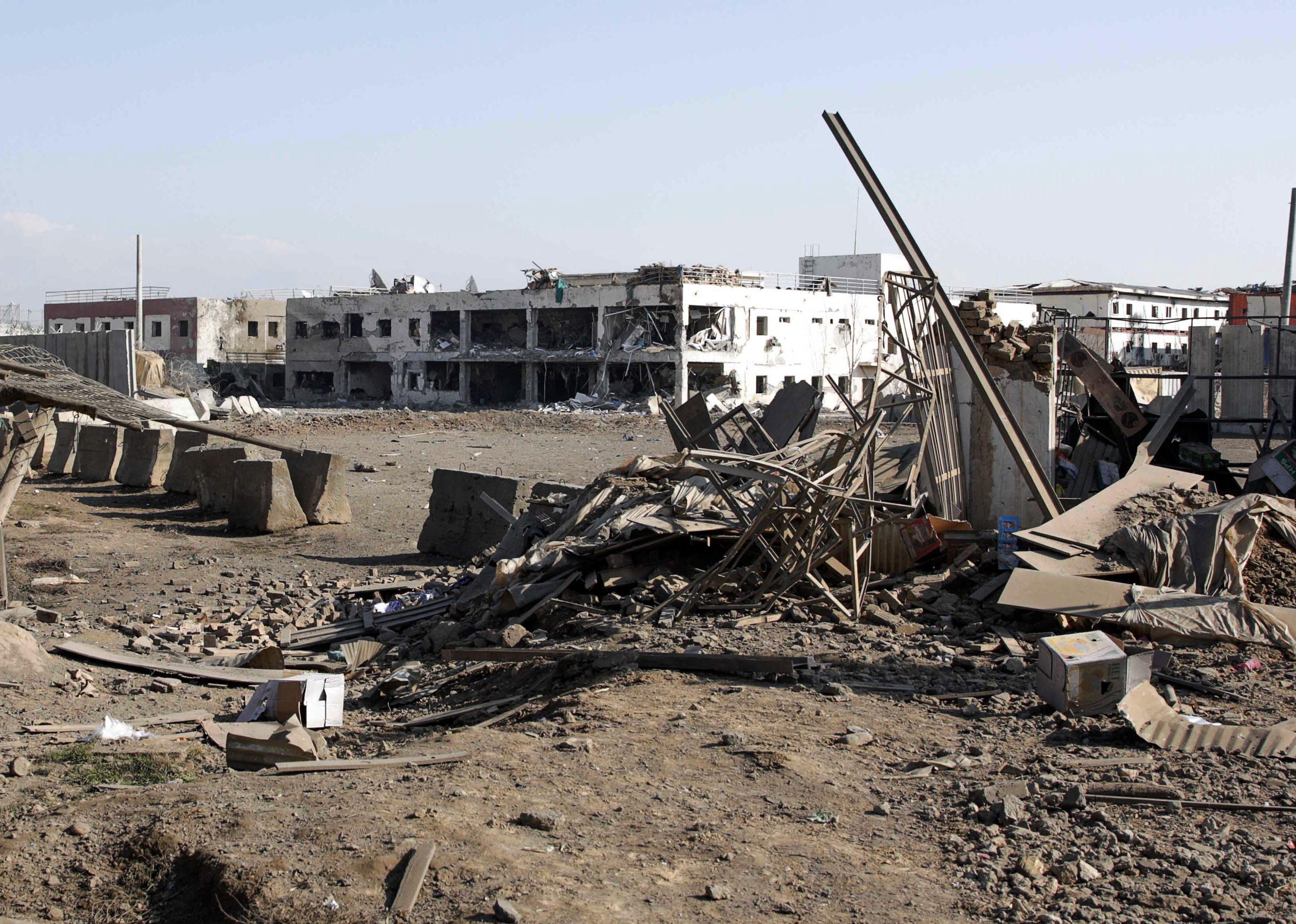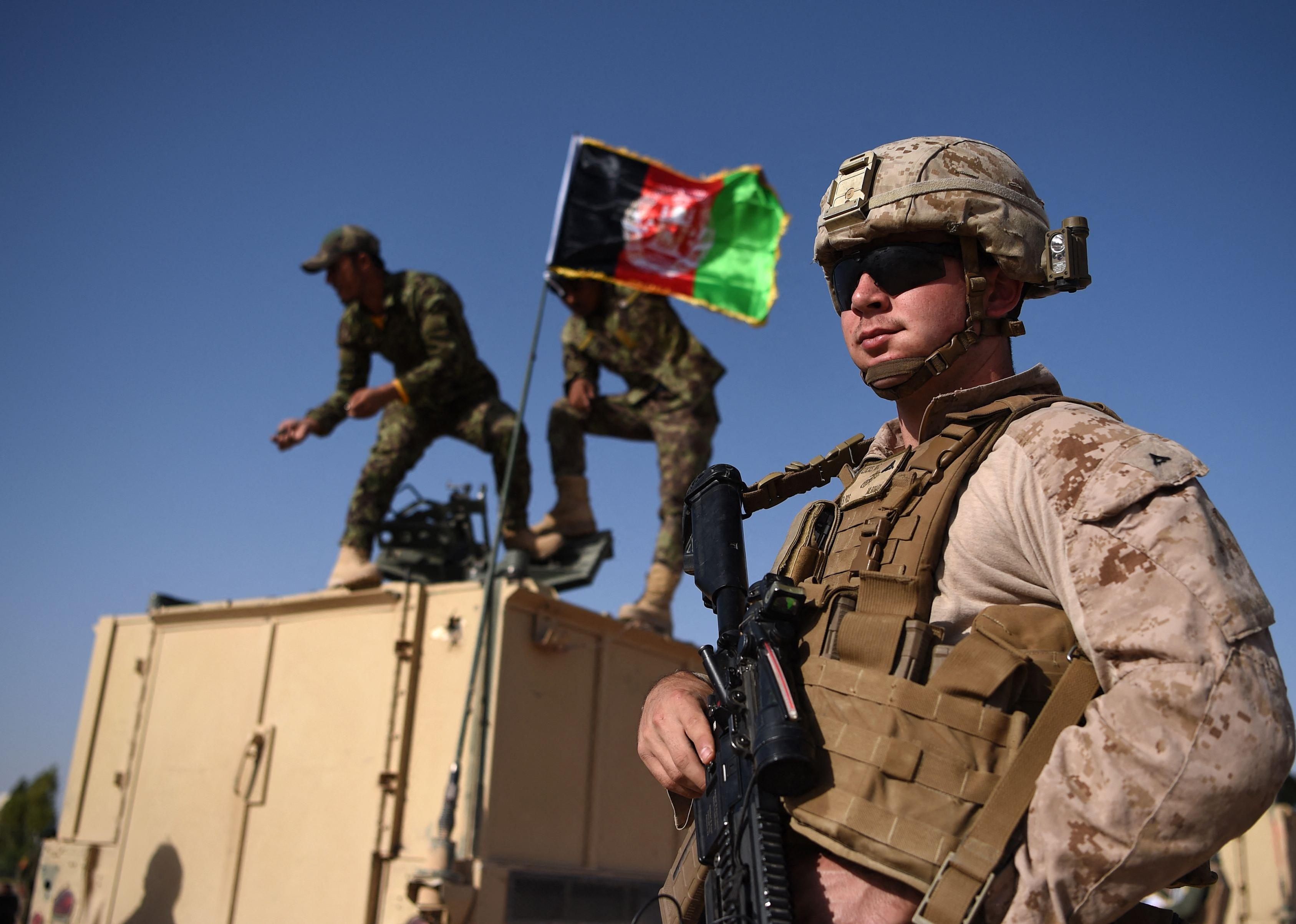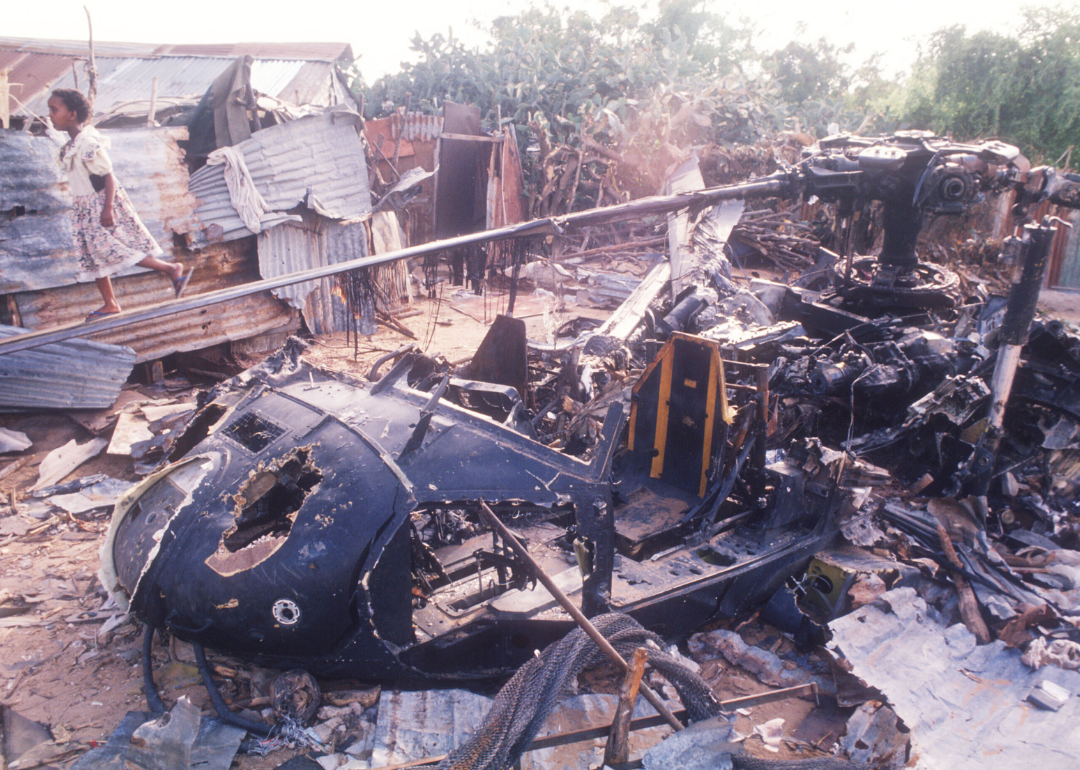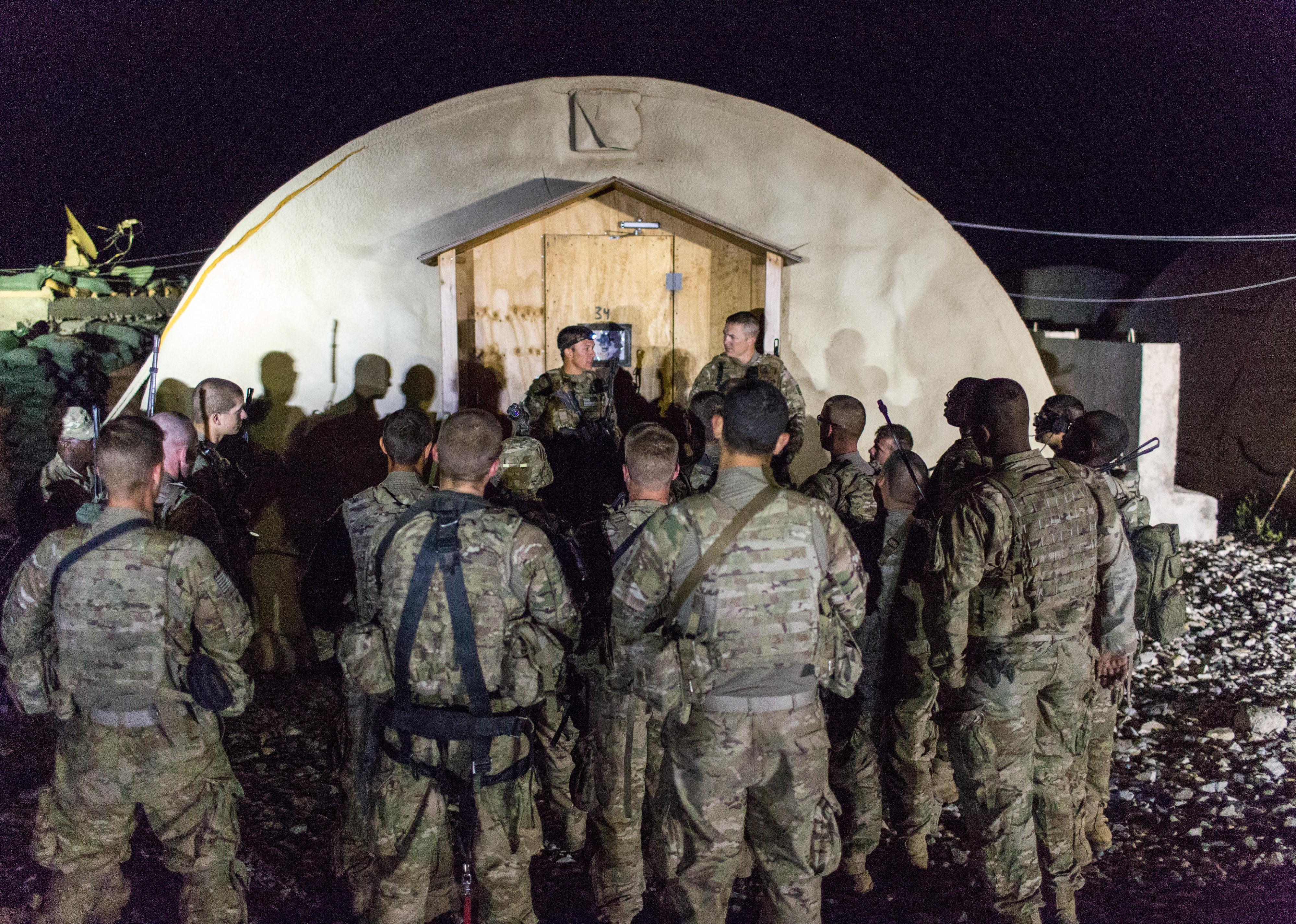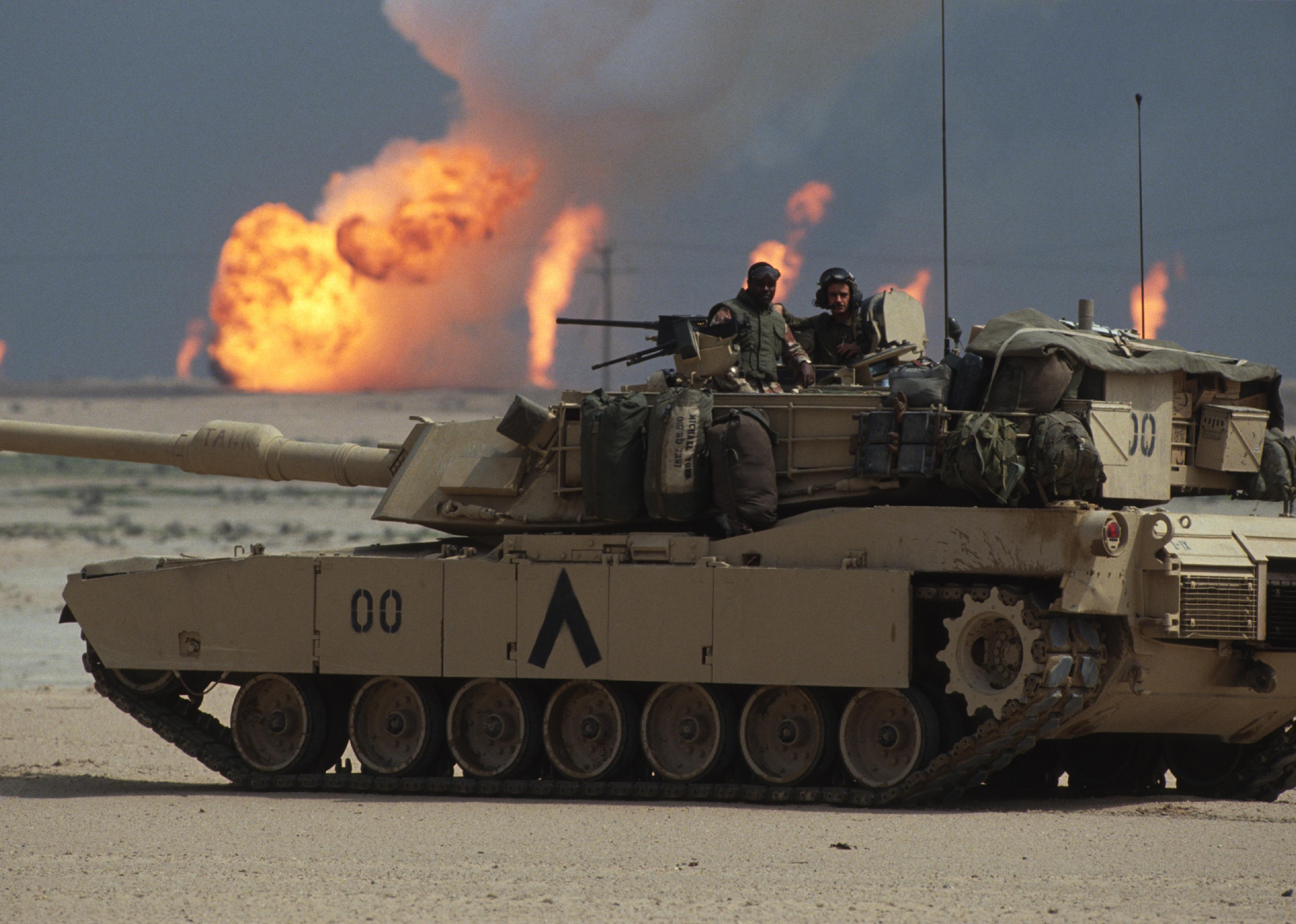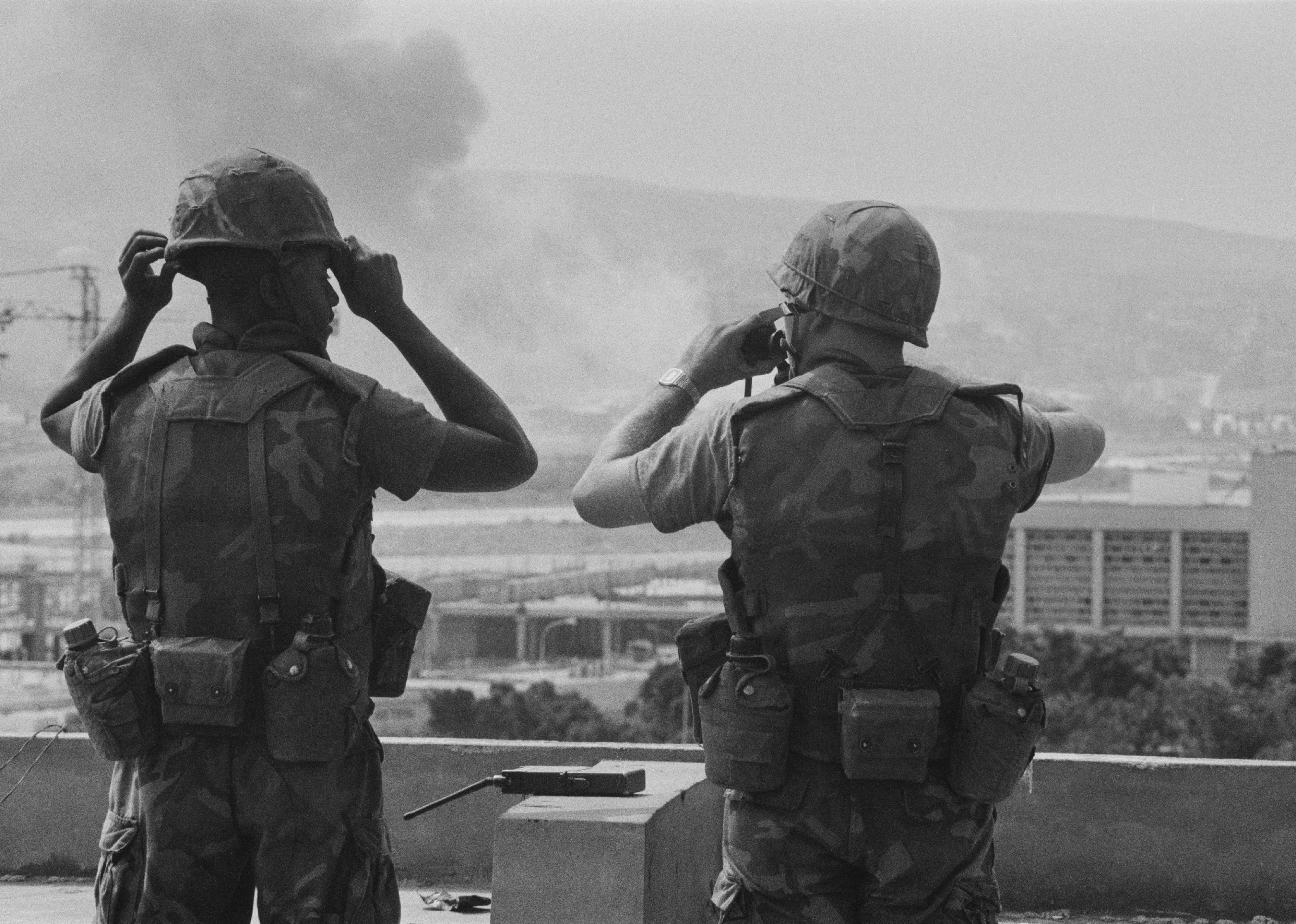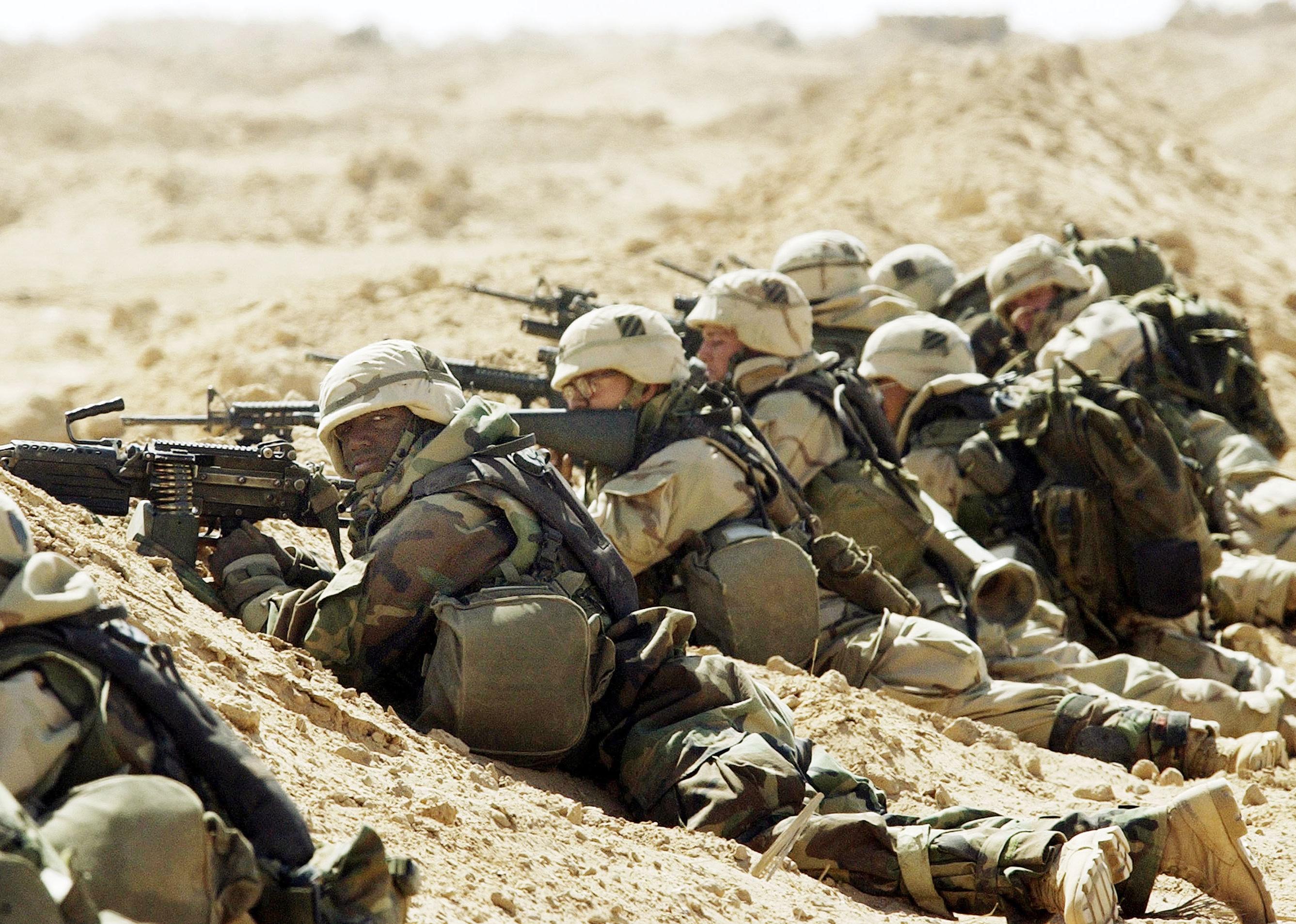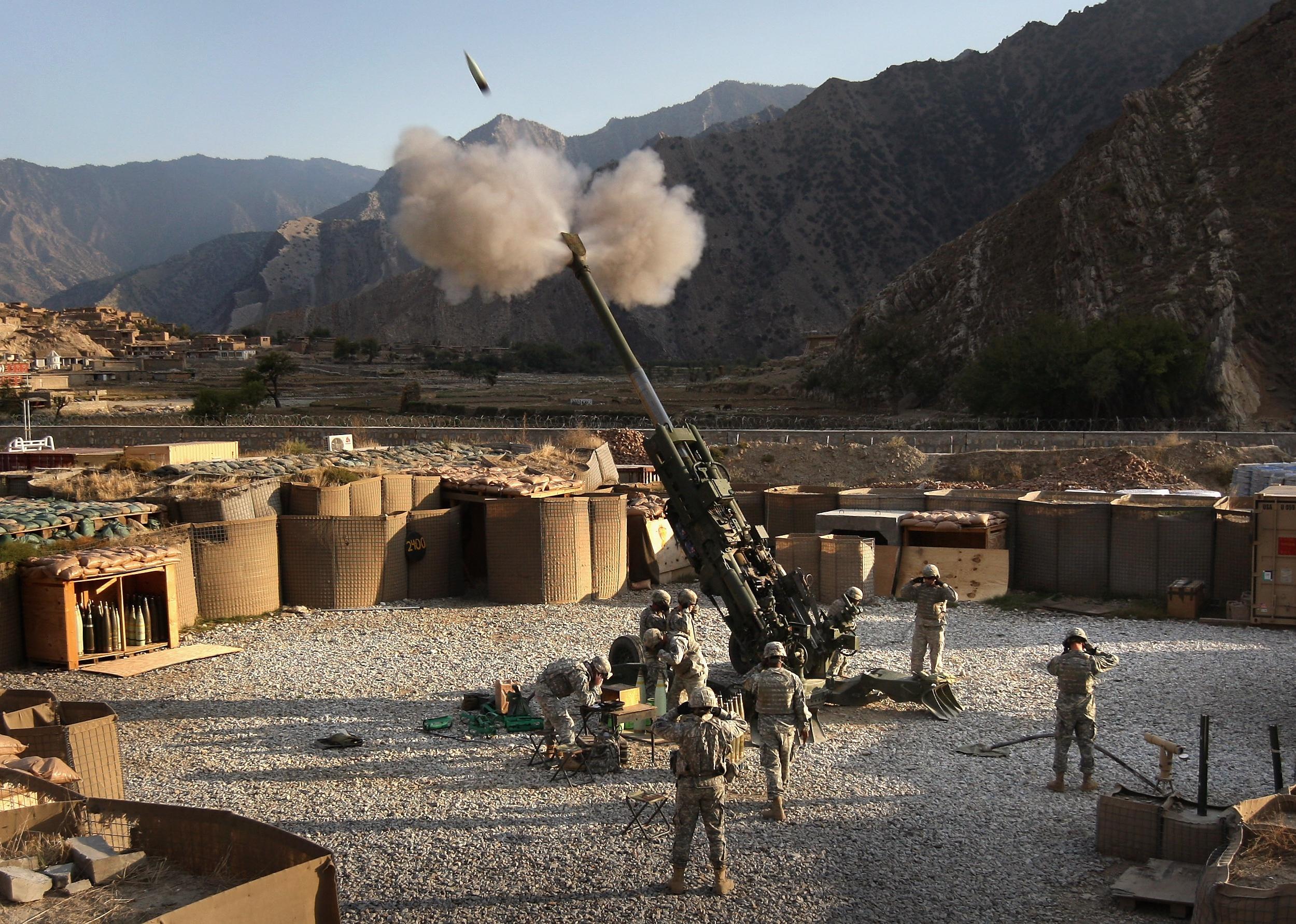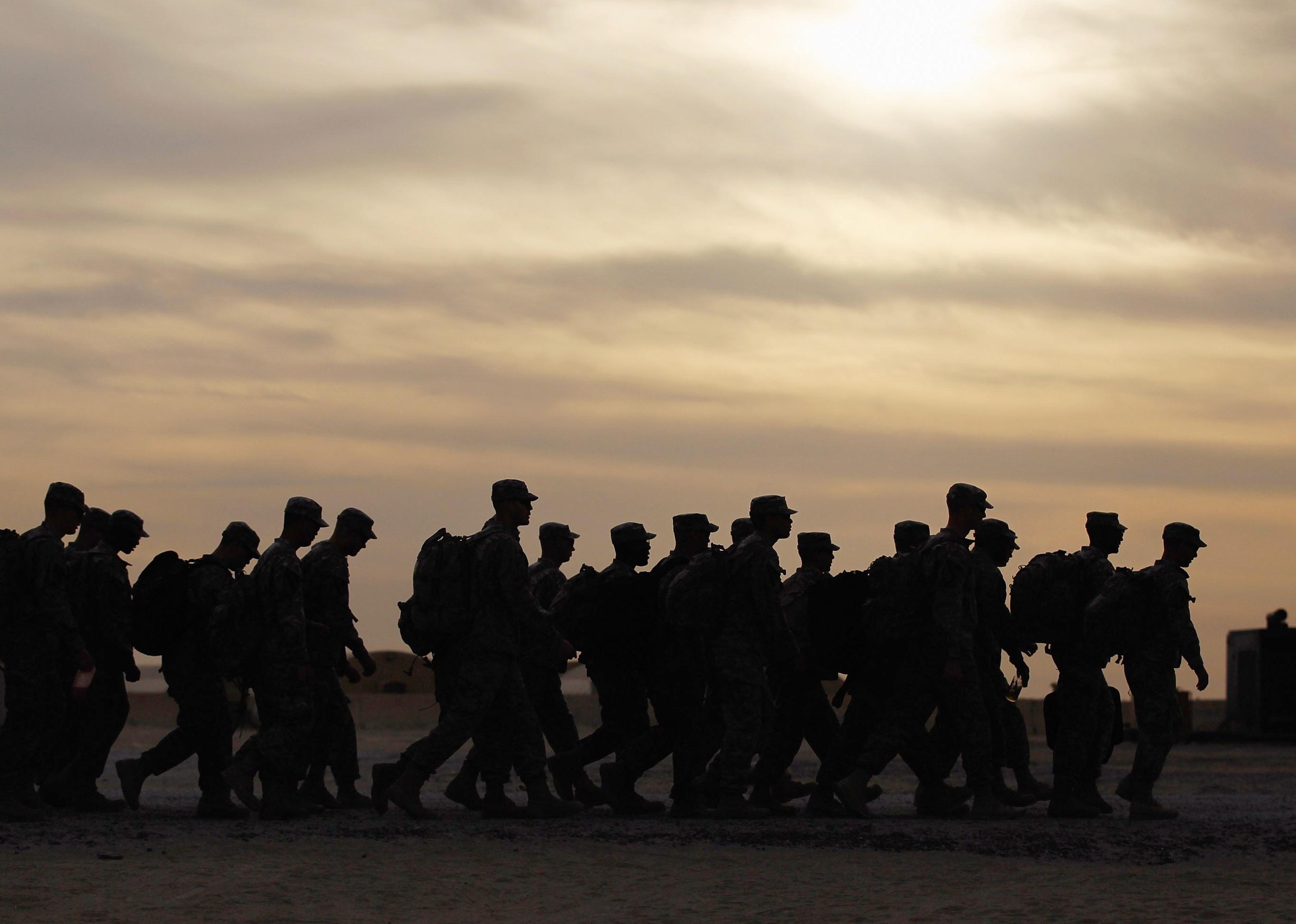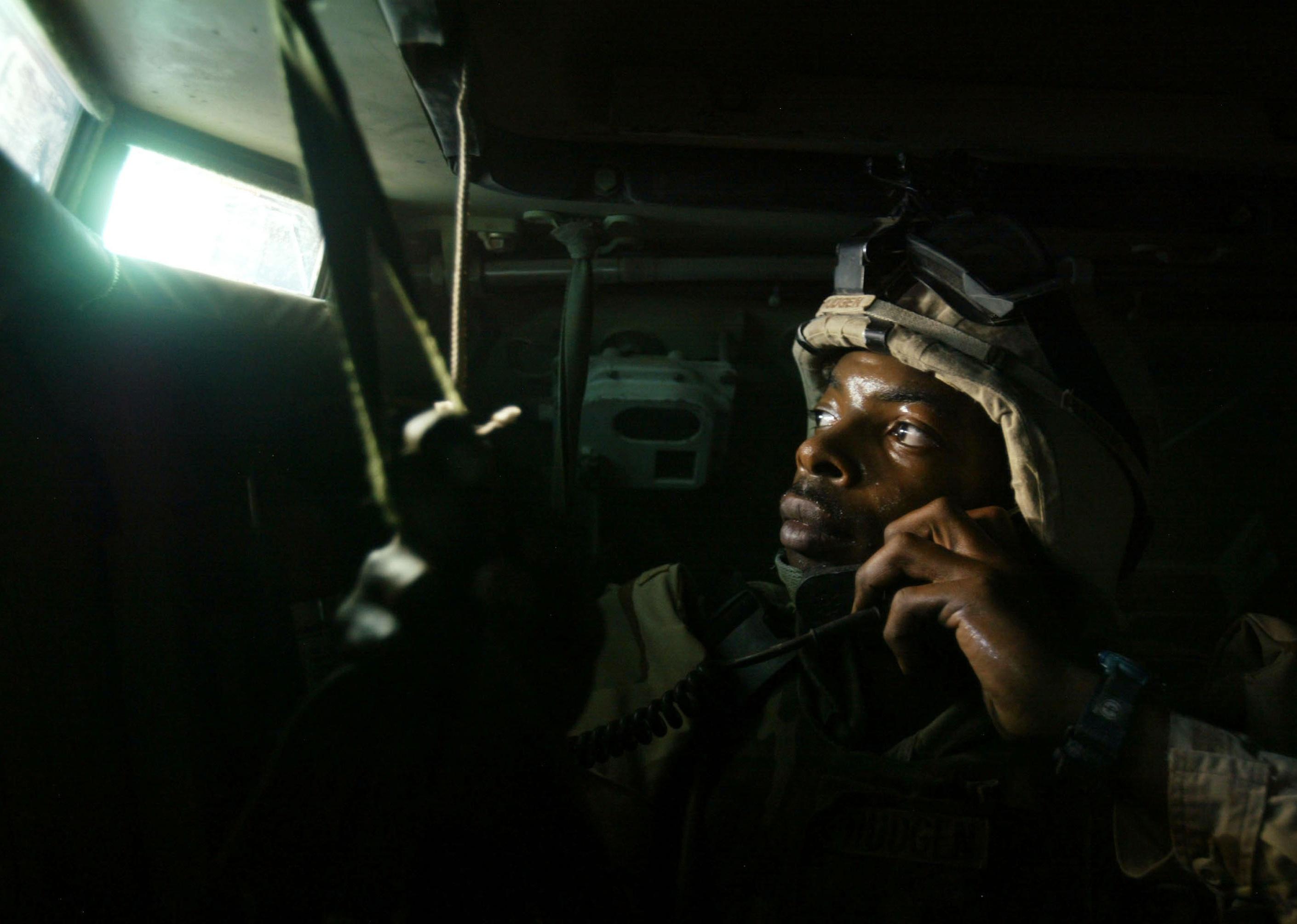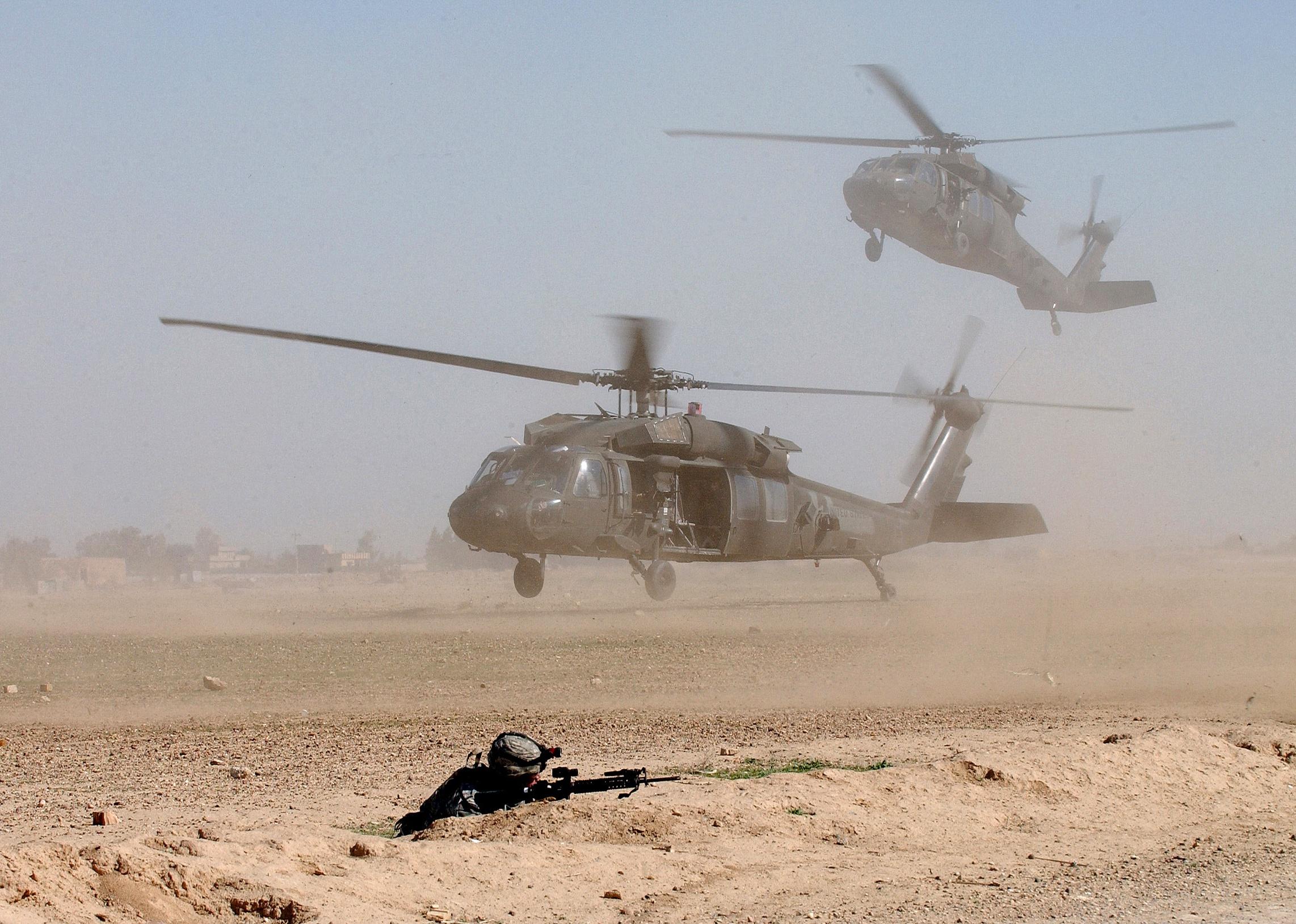25 deadliest years in military history between 1980-2021
François LOCHON/Gamma-Rapho // Getty Images
25 deadliest years in military history between 1980 – 2021
Navy sailors in uniform carrying a casket covered in a flag.
As a world power, the United States faces an extensive array of threats ranging from near-peer rivals to non-state actors, such as insurgents and terrorists. The country’s position as a superpower with an idealist foreign policy posture compels it often to participate in military interventions overseas.
The U.S. engaged in more than 500 showings of military force between the years 1776 and 2017. About 60% of those interventions took place between 1950 and 2017, according to data from the Military Intervention Project at Tufts University’s Fletcher School of Law and Diplomacy.
As noted by the late political scientist and former CIA consultant Chalmers Johnson in his book “Blowback,” the interventions, covert actions, and wars the U.S. engages in have a blowback effect, stimulating new threats that require further U.S. military action. The cost comes in the form of American lives lost in defending the country from threats and carrying out strategic goals at the tactical and operational levels.
Stacker ranked the deadliest years for the U.S. military between 1980 and 2021 by the number of conflict-related fatalities, according to data from the Defense Casualty Analysis System. Conflict-related fatalities are defined as deaths resulting from terrorist attacks or hostile action, and other combat-related deaths such as those caused by accidents and illnesses, suicides, and other pending or undetermined causes. The figures are accurate as of May 2022 and include soldiers in full-time-equivalent roles, including active duty and reserve personnel.
![]()
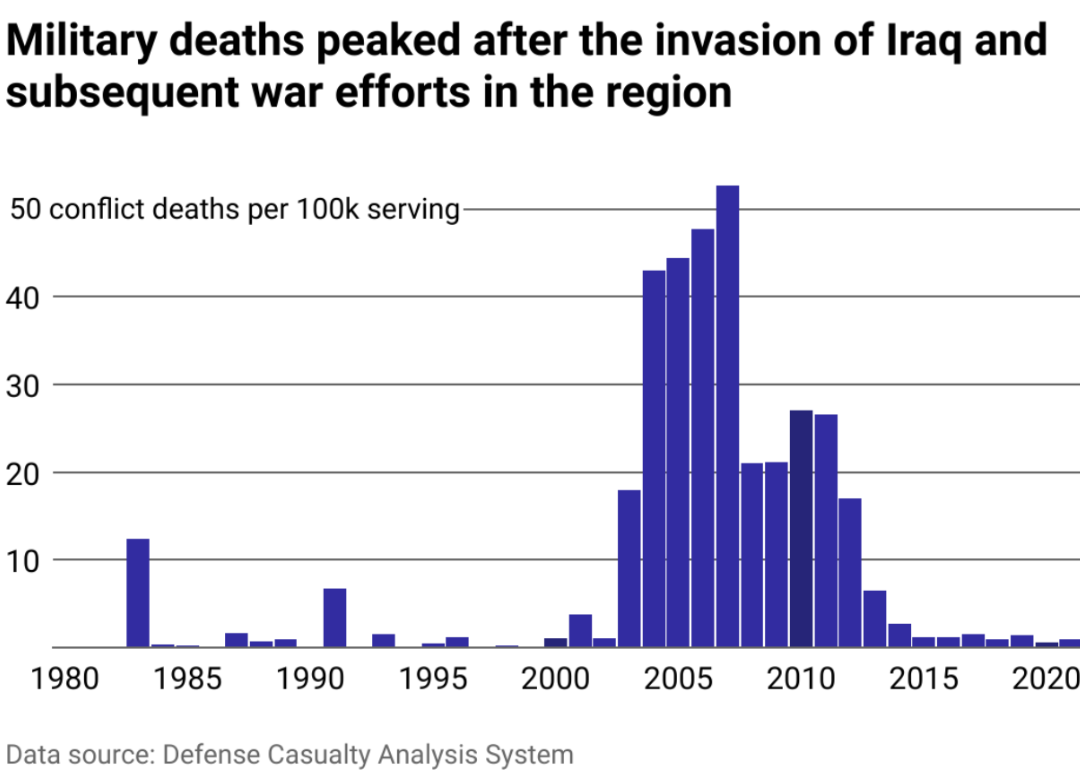
Stacker
Overall, military deaths peaked after the invasion of Iraq
A bar chart showing how military deaths peaked after the invasion of Iraq.
The number of US military fatalities after 1980 peaked right after President George W. Bush’s 2003 invasion of Iraq. This falls within the period of America’s “forever wars”—lengthy, time and personnel-consuming American interventions in the Middle East and Afghanistan—which began with the 1990–1991 Gulf War, according to Bruce Reidel, senior fellow at the Brookings Institution.
The period after the initial 2003 Iraq invasion saw the rise of an insurgency in the country that lasted between 2003 and 2007, where American and allied forces and Iraqi security forces were attacked by militia groups opposed to Western presence and influence in Iraq. Similarly, after the U.S. defeated the Taliban in 2001, the Taliban started its own insurgency against U.S. and Afghan forces. In Iraq, the insurgency became a breeding ground for terrorist groups such as the Islamic State in Iraq and Syria.
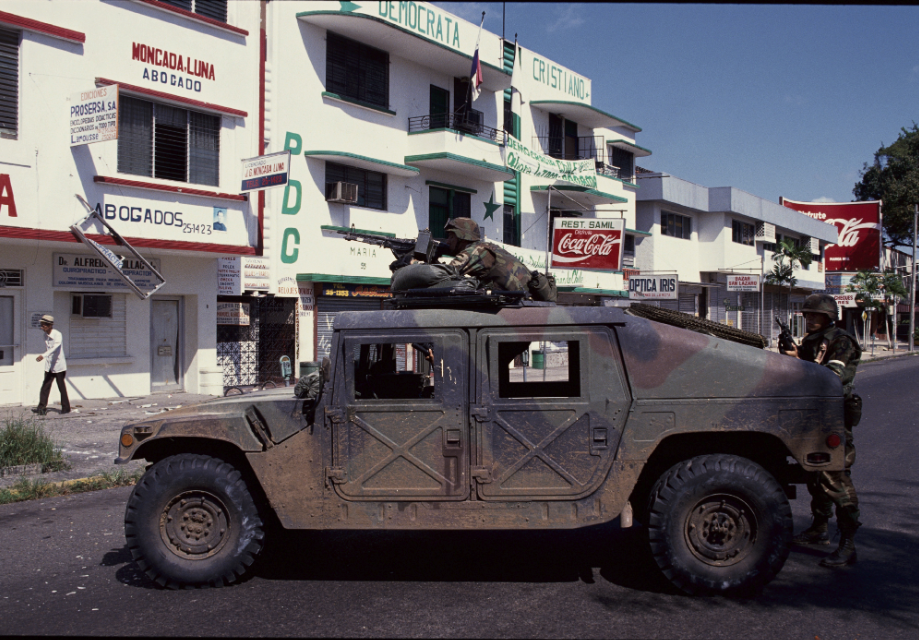
Steve Starr/CORBIS/Corbis // Getty Images
#25. 1989
U.S. troops patrol the streets of Panama City in a military vehicle.
– Conflict deaths per 100k FTE: 1.00 (23 deaths)
– Total full-time equivalent military: 2,303,384
– Total deaths: 1,636
The U.S., under President George H.W. Bush, in 1989 launched “Operation Just Cause,” invading Panama in response to clashes between U.S. and Panamanian troops near the Panama Canal zone. The operation’s goal included deposing Panamanian President and former CIA collaborator Manuel Noriega and bringing him to justice.
The war ended with Noriega being overthrown and arrested by the U.S. on drug-related charges and a new government taking power.
Mai // Getty Images
#24. 2002
US Navy F/A-18 Hornet jets sitting on the flight deck waiting to be loaded.
– Conflict deaths per 100k FTE: 1.04 (17 deaths)
– Total full-time equivalent military: 1,627,142
– Total deaths: 1,051
In 2002, the U.S. saw the end of the first year of Operation Enduring Freedom, part of the U.S. invasion of Afghanistan, which lasted until August 2021. The U.S. initiated the invasion to apprehend Osama bin Laden for his role in the 9/11 attacks.
During the invasion, in coordination with local allies including, notably, the Northern Alliance, the U.S. also worked to end Taliban rule in Afghanistan and establish an Islamic Republic. The Taliban returned to power almost immediately after the U.S. finally withdrew in 2021.
Lyle G. Becker/U.S. Navy/Newsmakers // Getty Images
#23. 2000
U.S. Navy and Marine Corps security personnel patrol past the damaged U.S. Navy destroyer USS Cole.
– Conflict deaths per 100k FTE: 1.11 (17 deaths)
– Total full-time equivalent military: 1,530,430
– Total deaths: 832
On Oct. 12, 2000, militants affiliated with al-Qaida drove an explosive-laden boat near the U.S. Navy destroyer USS Cole while the ship was refueling in Aden, Yemen. The explosives on the dinghy detonated near the destroyer, lacerating the ship’s hull and killing 17 sailors while wounding 37 other individuals. U.S. authorities believed the attack was carried out on the orders of Osama bin Laden.
Samuel Corum/Anadolu Agency // Getty Images
#22. 2015
US Army Lt. Gen. James L. Terry, commander of Operation Inherent Resolve, holds a press briefing at the Pentagon Briefing Room in Arlington, Va.
– Conflict deaths per 100k FTE: 1.17 (16 deaths)
– Total full-time equivalent military: 1,370,516
– Total deaths: 869
U.S.-led coalition forces in 2015 were involved in conducting aerial strikes on ISIS targets in Iraq and Syria to support Iraqi army personnel fighting the militant group as part of Operation Inherent Resolve. During that year, the U.S. also deployed troops to Cameroon to help the country defeat Boko Haram.
Carolyn Cole/Los Angeles Times // Getty Images
#21. 2016
A U.S. soldier steps out of a bunker in Iraq.
– Conflict deaths per 100k FTE: 1.17 (16 deaths)
– Total full-time equivalent military: 1,364,026
– Total deaths: 811
As of 2016, the U.S. was involved in Operation Inherent Resolve and the war in Afghanistan. During a patrol in Helmand province, a U.S. soldier was killed by the explosion of a roadside bomb. Three U.S. soldiers also died in Jordan after taking fire while approaching a military base in the country.
Getty Images
#20. 1996
Khobar Towers after an explosion.
– Conflict deaths per 100k FTE: 1.24 (20 deaths)
– Total full-time equivalent military: 1,613,675
– Total deaths: 974
In 1996, the U.S. witnessed what the Brookings Institution called “the bloodiest attack on America between the Beirut Marine barracks disaster in 1983 and September 11, 2001”: the bombing of Khobar Towers on June 25, 1996. The attack occurred near the barracks where service members of the Air Force 4404 Provisional Wing were stationed, killing 19 U.S. soldiers and wounding approximately 498 individuals.
STR/AFP // Getty Images
#19. 2019
Damaged buildings after a car bomb was detonated.
– Conflict deaths per 100k FTE: 1.45 (21 deaths)
– Total full-time equivalent military: 1,453,279
– Total deaths: 893
In April 2019, the Taliban planted a car bomb that detonated near the then-U.S.-controlled Bagram Air Field, resulting in the deaths of three soldiers. A month earlier, two U.S. soldiers were reported dead following an unspecified operation in the country, according to reporting from PBS. Both the war in Afghanistan and Operation Inherent Resolve were going on at the time.
WAKIL KOHSAR/AFP // Getty Images
#18. 2017
A US Marine looks on as Afghan National Army soldiers raise the Afghan National flag on an armed vehicle in the background.
– Conflict deaths per 100k FTE: 1.53 (21 deaths)
– Total full-time equivalent military: 1,376,346
– Total deaths: 906
Three Army Green Berets lost their lives in October 2017 after being ambushed in Niger in an area where the Islamist militant group al-Qaida in the Islamic Maghreb was known to operate, according to reporting from the New York Times. Earlier that year, a commando in the Afghan army opened fire on his U.S. colleagues during a joint operation in Nangarhar province, Afghanistan, killing three U.S. soldiers. Around August of that year, the U.S. military announced the death of two soldiers in Iraq without providing further detail on the circumstances of their death.
Scott Peterson/Liaison // Getty Images
#17. 1993
A child walking along the rotor of a wrecked American helicopter in Mogadishu, Somalia.
– Conflict deaths per 100k FTE: 1.57 (29 deaths)
– Total full-time equivalent military: 1,849,537
– Total deaths: 1,213
On Oct. 3 and 4, 1993, U.S. forces fought against members of the Somali National Alliance and armed civilians in a set of engagements in the southern part of Mogadishu, Somalia’s capital. RPGs downed two Black Hawk helicopters, leaving soldiers on board to fend for themselves as they awaited help.
The incident resulted in the death of 18 American soldiers. During this year, the U.S. through NATO was involved in enforcing a no-fly zone over Bosnia and Herzegovina.
Francois LOCHON/Gamma-Rapho // Getty Images
#16. 1987
The USS Stark.
– Conflict deaths per 100k FTE: 1.66 (39 deaths)
– Total full-time equivalent military: 2,352,697
– Total deaths: 1,983
In 1987, 37 Navy sailors died after an Iraqi jet fighter engaged in the Iran-Iraq War launched two Exocet missiles that hit USS Stark in the port side, causing a fire. During this year, the U.S. was also involved in Operation Earnest Will, which involved protecting Kuwaiti tankers from attacks by Iran during the Iran-Iraq War’s tanker attack phase.
ALI AL-SAADI/AFP // Getty Images
#15. 2014
A U.S. soldier stands guard in front of graffiti.
– Conflict deaths per 100k FTE: 2.75 (38 deaths)
– Total full-time equivalent military: 1,381,180
– Total deaths: 880
ISIS in 2014 seized control over the Iraqi cities of Fallujah, Mosul, and Tikrit before announcing that the areas under its control were part of a new caliphate. ISIS’s rise would eventually cause the U.S. to launch Operation Inherent Resolve for the express purpose of defeating ISIS.
USAF // Getty Images
#14. 2001
A B-1B Lancer from the U.S. Air Force dropping arsenal over Afghanistan.
– Conflict deaths per 100k FTE: 3.74 (58 deaths)
– Total full-time equivalent military: 1,552,096
– Total deaths: 943
In October 2001, following the 9/11 attacks, President George W. Bush approved the U.S. invasion of Afghanistan to capture Osama bin Laden, depose the Taliban, and eliminate any threat of terrorism emanating from the country.
While the initial phase of the war—overthrowing the Taliban from power—was accomplished in not more than two months, the Taliban later mounted several insurgencies over the years of the long war that ensued, becoming a recurrent source of death and injury for U..S service members.
Robert Nickelsberg // Getty Images
#13. 2013
US Army soldiers receive a briefing in Afghanistan.
– Conflict deaths per 100k FTE: 6.49 (91 deaths)
– Total full-time equivalent military: 1,403,066
– Total deaths: 1,031
During the first half of 2013, eight U.S. soldiers lost their lives after encountering small-arms attacks, an insider attack, and an improvised explosive device explosion, according to reporting at the time from the New York Times. Later that year, in December, six U.S. soldiers died after their helicopter crashed during an engagement with Taliban insurgents. The Afghanistan War was underway at the time.
Allan Tannenbaum // Getty Images
#12. 1991
American soldiers stand on a tank with fires burning in the background.
– Conflict deaths per 100k FTE: 6.69 (147 deaths)
– Total full-time equivalent military: 2,198,189
– Total deaths: 1,787
The first half of this year witnessed the last phases of the Gulf War, which began in August 1990. Feb. 25, 1991, three days before the war’s end, saw the largest number of U.S. soldiers killed in one incident when Iraqi forces fired a Scud missile that struck a U.S. military barracks in Dhahran, Saudi Arabia, killing 27 individuals.
Alain MINGAM/Gamma-Rapho // Getty Images
#11. 1983
Marines stand guard on top of a building with smoke in the distance.
– Conflict deaths per 100k FTE: 12.36 (281 deaths)
– Total full-time equivalent military: 2,273,364
– Total deaths: 2,465
On Oct. 23, 1983, 241 Marines stationed in Beirut, Lebanon to supervise the Palestinian Liberation Organization’s withdrawal from Beirut were killed en-masse by a truck bomb that exploded at the site where they were headquartered. The incident was the largest loss of American military personnel since the end of the Vietnam War.
MUNIR UZ ZAMAN/AFP // Getty Images
#10. 2012
A U.S. Army soldier on patrol in Afghanistan.
– Conflict deaths per 100k FTE: 16.95 (239 deaths)
– Total full-time equivalent military: 1,410,178
– Total deaths: 1,308
The year 2012 saw the usual continuation of the war in Afghanistan. That year, the U.S. sent 100 troops to Uganda to help local soldiers battle the Lord’s Resistance Army rebel group. The U.S. also sent troops to Jordan to help the country deal with the effects of the Syrian Civil War.
Scott Nelson // Getty Images
#9. 2003
U.S. Army soldiers lined up on the ground in shooting position.
– Conflict deaths per 100k FTE: 18.01 (312 deaths)
– Total full-time equivalent military: 1,732,632
– Total deaths: 1,399
One event had the most number of U.S. casualties in 2003: the Iraq War. Undertaken between mid-March and early May by the “Coalition of the Willing,” comprised primarily of troops from the U.S. and the United Kingdom, along with contributions from other nations, this military engagement saw the Iraqi military defeated and regime change implemented over the following years under U.S. occupation. Resistance by Iraqi fighters opposed to U.S. occupation would be a source of U.S. casualties after the collapse of deposed Iraqi President Saddam Hussein’s government.
John Moore // Getty Images
#8. 2008
Artillerymen fire a 155mm Howlitzer at a Taliban position in Afghanistan.
– Conflict deaths per 100k FTE: 20.97 (353 deaths)
– Total full-time equivalent military: 1,683,144
– Total deaths: 1,440
In 2008, the U.S. began cracking down on Shia insurgent groups in Iraq, causing a backlash among supporters of Shia cleric Muqtada al-Sadr. Also that year, the U.S. also began handing over security responsibilities to the Iraqi government. In Afghanistan, regular operations by NATO and U.S. forces against the Taliban, who had their own insurgency, continued.
MARWAN IBRAHIM/AFP // Getty Images
#7. 2009
U.S. Army soldiers surveying damage in Iraq after a blast.
– Conflict deaths per 100k FTE: 21.09 (346 deaths)
– Total full-time equivalent military: 1,640,751
– Total deaths: 1,515
According to the Council for Foreign Relations, 2009 marked the start of a drawdown in U.S. troops stationed in Iraq. Troops also began to withdraw from major cities in the country in line with a bilateral status of forces agreement signed by both governments. This year saw two attacks on soldiers within the U.S.
On June 1, Abdulhakim Muhammad attacked a soldier in Little Rock, Arkansas, killing him and wounding another. On Nov. 5, Nidal Malik Hasan killed 13 people and injured 29 more at Fort Hood.
Joe Raedle // Getty Images
#6. 2011
U.S. Army soldiers withdrawing from Iraq.
– Conflict deaths per 100k FTE: 26.57 (395 deaths)
– Total full-time equivalent military: 1,486,364
– Total deaths: 1,450
2011 marked the end of the Iraq War and the withdrawal of U.S. troops from the country on the orders of President Barack Obama. The year was also when U.S. forces managed to eliminate Osama bin Laden in Abbottabad, Pakistan, and intervened, along with other NATO countries, in the Libyan civil war.
CHRISTOPHE SIMON/AFP // Getty Images
#5. 2010
US Marines walking away after adjusting the identification tags on the memorials of soldiers who were killed in Afghanistan.
– Conflict deaths per 100k FTE: 27.06 (456 deaths)
– Total full-time equivalent military: 1,685,178
– Total deaths: 1,485
This year witnessed the final phases of the Iraqi insurgency leading to the U.S. exit from Iraq, which continued to result in U.S. soldiers dying in Afghanistan and Iraq. 2020 also marked the resurgence of al-Qaida’s efforts in Yemen.
Joe Raedle // Getty Images
#4. 2004
An American Army Sergeant looking out the window of a Bradley fighting vehicle in Najaf, Iraq.
– Conflict deaths per 100k FTE: 42.93 (735 deaths)
– Total full-time equivalent military: 1,711,916
– Total deaths: 1,847
A year after the 2003 invasion of Iraq and three years after the invasion of Afghanistan, U.S. troops found themselves fighting remnants of Saddam Hussein’s soldiers, along with Shia and Sunni militia groups in Iraq and a growing Taliban insurgency in Afghanistan.
The U.S. also participated in military activities that year in Kenya, Ethiopia, Yemen, Eritrea, and Djibouti under the guise of the Global War on Terror.
Lance Cpl. Michael R. McMaugh, 1st Marine Division Combat Camera // Getty Images
#3. 2005
Soldiers setting up security after landing in the desert in Baghdad.
– Conflict deaths per 100k FTE: 44.41 (739 deaths)
– Total full-time equivalent military: 1,664,014
– Total deaths: 1,929
2005 saw the closure of U.S. bases in Uzbekistan following the deterioration of ties between the two countries. With the U.S. grappling with an insurgency, locals in Iraq and soldiers grew increasingly disillusioned with the course of the war in light of rising casualties and unmet expectations.
STAFF SGT RUSSEL LEE KILKA/AFP // Getty Images
#2. 2006
A US soldier leading a platoon of Iraqi Police Officers in Samarra.
– Conflict deaths per 100k FTE: 47.72 (769 deaths)
– Total full-time equivalent military: 1,611,533
– Total deaths: 1,882
Sunni in 2006 militants destroyed a Shia shrine in the Iraqi city of Samarra, leading to clashes along sectarian lines in the country. The intensifying insurgency, threatening to become a civil war, contributed to many civilian casualties that year. U.S. forces also killed al-Qaida-in-Iraq founder Abu Musab Al Zarqawi in June of this year.
SGT. MOLLY DZITKO/USAF/AFP // Getty Images
#1. 2007
Blackhawk helicopters landing on the battlefield to pick up U.S. soldiers.
– Conflict deaths per 100k FTE: 52.67 (847 deaths)
– Total full-time equivalent military: 1,608,226
– Total deaths: 1,953
The Iraqi insurgency grew increasingly violent in 2007 following the election of Nouri al-Maliki as Iraq’s prime minister, the execution of Saddam Hussein, and the killing of AQI founder Zarqawi. Suicide bombings, improvised explosive device detonations, and terrorism claimed the lives of U.S. soldiers and Iraqi tribesmen collaborating with U.S. forces.
